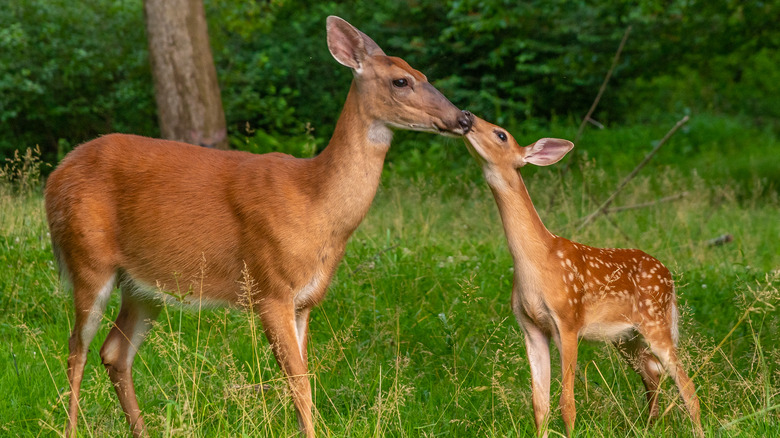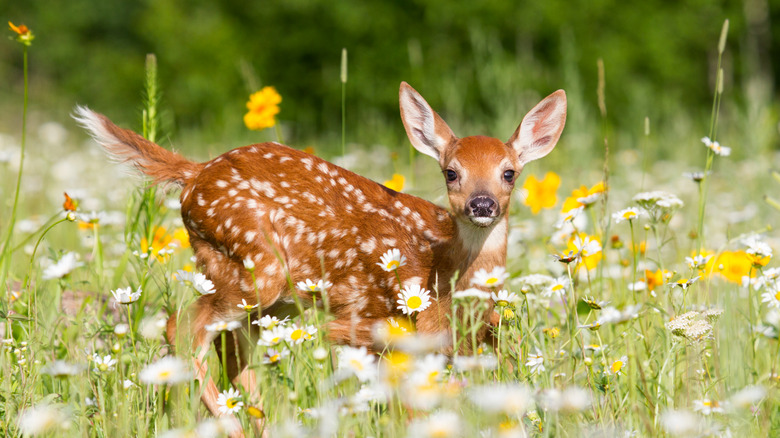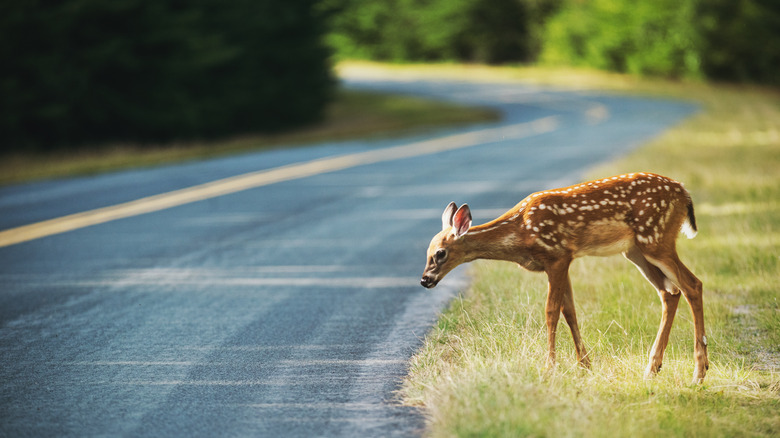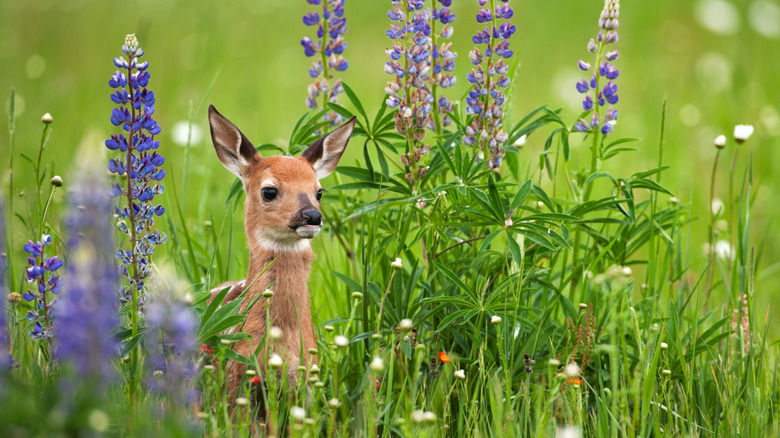What To Do If You Come Across A Baby Deer Alone In The Woods
You're walking through the woods on a beautiful day in early June when you spot something up ahead: it's a fawn. At first, you're captivated by this baby deer and its adorable white spots, but as you watch, you start to get nervous. Why is this little one alone?
This is a common experience in late spring and early summer. For many, spotting a young fawn sleeping curled up in the grass with no mother in sight can be worrying. Even more distressingly, they often stay completely still and won't leave as a human gets close to them. Many worry that this baby is injured, sick, or lost.
In most cases, however, there's no need to spring into action. As counterintuitive as it might seem to humans, these babies are usually completely fine and doing exactly what they're supposed to do — staying put and waiting for mom to come back.
Its mother is coming back
Even though it seems like the baby was abandoned, its mother probably knows exactly where it is. When mother deer go off to find food, they often leave their babies in a safe place. The forest is a perfect option, as the white spots on their back can resemble the dappled light coming through the trees and keep them camouflaged. It may seem worrying that the baby is holding still and allowing people to approach it, but as long as babies hold still, they're less likely to be seen by hungry predators.
Typically, the fawn's mother is not far away. She will return a few times during the day to feed her baby. They only stay for a moment or two, though, so it can be hard to tell when the mother checked in most recently unless you are watching the baby non-stop. If you've been checking in on this baby for 24 hours and it's still waiting in the same spot, it might be time to worry. Until then, it's safe to assume mama is on top of the situation.
What if the fawn does need help?
While the vast majority of fawns on their own are perfectly safe, there are a few situations in which they could use your help. WildCare wildlife hospital employs the "Five Cs" to determine if a fawn needs help. If a fawn is crying, obviously cold, coming over to you, covered in bugs or blood, or in danger of being caught or threatened by dogs, you should get help from a local rescue organization. If it is lying on its side instead of being curled up, that may also be a sign of trouble. If there is a dead doe nearby that might be its mother, the baby probably needs your help.
In the United States, you can find a local wildlife rehabilitator using the Animal Help Now database. Elsewhere, you can consult the International Wildlife Rehabilitation Council for local resources. You can also try contacting your local or federal wildlife agency for advice.
What if the fawn is in an unsafe place?
If you find a fawn in the road, it needs to be moved to safety.
There is a common myth that a mother animal will reject her baby if it smells that you have touched it, but that isn't the case. You aren't dooming a fawn to being abandoned by its mother by touching it, but it's still best to be cautious for your own and the fawn's safety and wear a face mask and gloves. After you move the deer, make sure it lies down where you left it and doesn't wander off. If it won't lie down, you can try tapping the baby's back between the shoulder blades, like its mother would do. After you're done, leave the area quickly so the mother isn't scared to come look for her fawn.
Remember, if the mother deer left her baby in this location, that is where she is going to come back for it. If the fawn absolutely must be moved, keep it as close by as possible to the original spot — never more than a few yards.
What if I already moved the fawn?
If you already moved the baby away from the spot its mother parked it and now realize that you've made a mistake, don't panic. Usually, the best thing to do is to get it back to where you found it as soon as possible.
As noted by the Toronto Wildlife Center, mother deer are determined, and will likely keep searching the area that they left their baby for three days even if they aren't exactly where they are supposed to be. As long as it hasn't been more than two days since you took the fawn, you can probably put it back where you found it and help reunite it with its mother.
If you have already fed the fawn or it has been longer than two days since you moved it, you should contact a wildlife rehabilitator for advice before putting it back.




